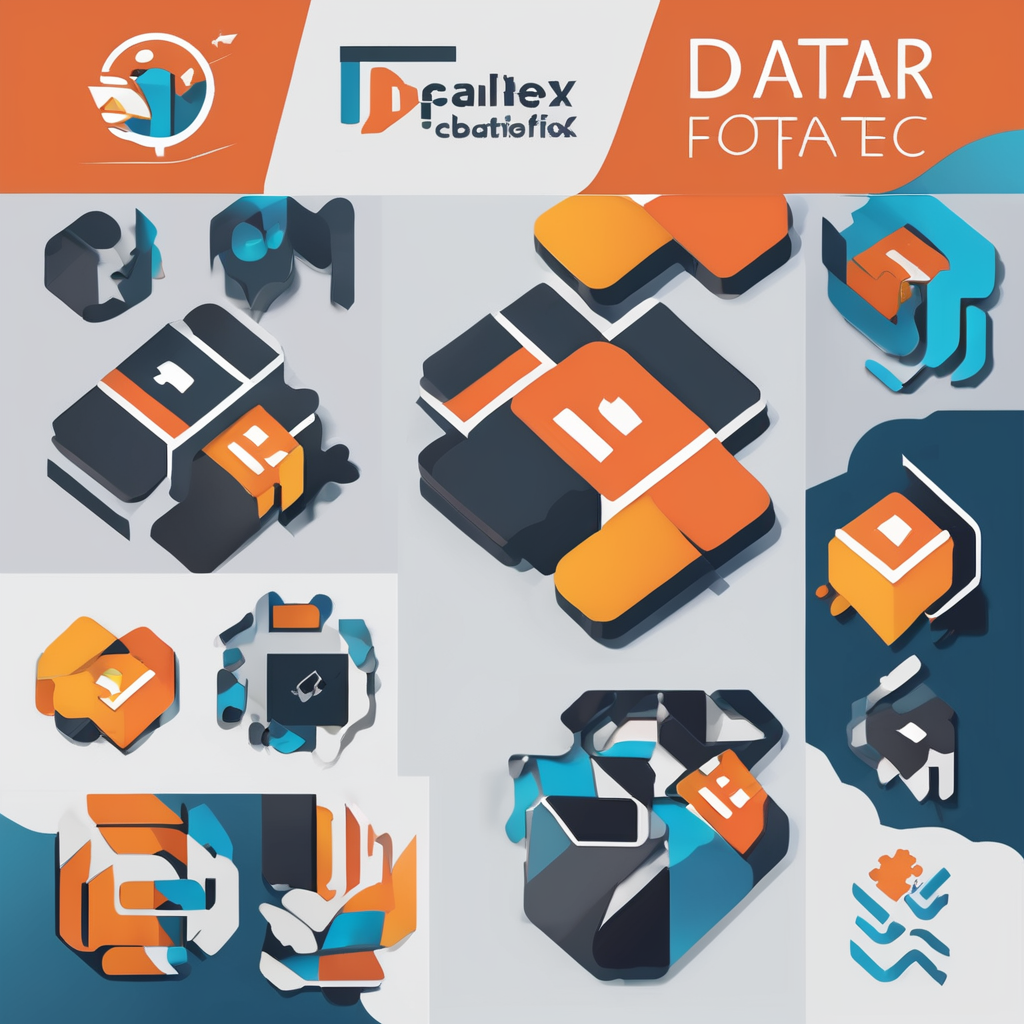Unlocking Kubernetes RBAC: Your Ultimate Step-by-Step Manual for Fine-Tuned Access Control
Understanding the Basics of Kubernetes RBAC
Before diving into the intricacies of Kubernetes Role-Based Access Control (RBAC), it’s essential to grasp the fundamental concepts. RBAC is a security mechanism that governs access to resources within a Kubernetes cluster, ensuring that only authorized users or entities can perform specific actions.
In Kubernetes, RBAC involves three key steps: authentication, authorization, and admission control.
Have you seen this : Achieving unmatched uptime: an ultimate guide to configuring postgresql with read replicas
Authentication
Authentication is the process of verifying the identity of a user or entity. In a Kubernetes cluster, there are three types of entities: users (human or service accounts), groups (a collection of users), and service accounts (used by pods inside the cluster). Users must be created using X.509 certificates signed by the cluster Certificate Authority (CA), a process that can be managed through Certificate Signing Requests (CSRs) and human access certificate issuing[1].
Authorization
Once authenticated, the RBAC system checks the permissions and roles assigned to the user or entity to determine if they have the necessary privileges to perform the requested actions. This step ensures that only authorized users, such as those with an admin role, can perform specific operations within the cluster. It’s crucial to follow the principle of least privilege (PoLP) and avoid general usage of the cluster admin role[1].
This might interest you : Comprehensive handbook: establishing a robust vpn with cisco anyconnect for your enterprise network security
Admission Control
Admission control is a mechanism that intercepts and processes API requests before they are persisted in the cluster control plane. The API server handles these requests, and the admission control process ensures they comply with the defined authorization policies. This mechanism enforces policies and rules to validate and modify the requested resources, including those requiring admin access[1].
Defining Roles and RoleBindings in Kubernetes
Roles are the heart of Kubernetes RBAC, defining what actions can be performed on which resources.
Roles
Roles in Kubernetes are scoped to either a single namespace or the entire cluster. Here are the key differences:
- Roles: These are scoped to a given single namespace. For example, a role might allow a user to create and modify resources within the “dev” namespace.
- ClusterRoles: These apply to the entire cluster and often utilize predefined roles or custom roles with different levels of access. ClusterRoles can be used to manage cluster-wide resources such as nodes, persistent volumes, and namespaces[1][4].
RoleBindings and ClusterRoleBindings
RoleBindings and ClusterRoleBindings are used to assign roles to users, groups, or service accounts.
- RoleBindings: These provide scoped access within specific namespaces, allowing for fine-grained control over permissions.
- ClusterRoleBindings: These enable global access across the entire cluster, streamlining administrative tasks[2][5].
Here is an example of a ClusterRole definition using YAML:
apiVersion: rbac.authorization.k8s.io/v1
kind: ClusterRole
metadata:
name: deployment-watcher
rules:
- apiGroups: ["apps"]
resources: ["deployments"]
verbs: ["get", "list", "watch"]
This ClusterRole grants the ability to get, list, and watch deployments across the entire cluster[1].
Managing RBAC Policies Effectively
Managing RBAC policies is crucial for maintaining the security and compliance of your Kubernetes cluster.
Using kubectl for RBAC Management
The kubectl command-line tool is the most straightforward way to manage RBAC policies. Here are a few examples of kubectl commands for viewing and managing RBAC policies:
kubectl get roleslists all the roles defined in the cluster, including their associated rules and scope.kubectl get clusterroleslists all the ClusterRoles defined in the cluster.kubectl get rolebindingsandkubectl get clusterrolebindingslist the bindings that assign roles to users, groups, or service accounts[1].
Best Practices for RBAC Management
To ensure your RBAC setup is secure and efficient, follow these best practices:
- Regularly Test RBAC Permissions: Ensure that entities can perform their necessary actions without being allowed to perform unauthorized actions. Thorough testing helps identify and rectify vulnerabilities in the system.
- Periodically Review and Clean Up: Review existing RBAC and account objects through audit reviews to ensure they are up-to-date. Delete unused roles, users, or groups to minimize the attack surface and streamline RBAC management[1].
Advanced RBAC with Open Policy Agent (OPA) and Gatekeeper
For more advanced and customized access control, you can integrate Open Policy Agent (OPA) and Gatekeeper into your Kubernetes environment.
Understanding OPA and Gatekeeper
OPA and Gatekeeper provide a powerful way to enforce custom policies across the Kubernetes cluster, enhancing your security posture.
- OPA: The Open Policy Agent is a general-purpose policy engine that can be used to enforce policies in various environments, including Kubernetes.
- Gatekeeper: Gatekeeper is a Kubernetes project that integrates OPA to enforce policies on Kubernetes resources. It allows you to define and enforce custom policies using Rego, the policy language used by OPA[2].
Implementing Advanced RBAC
Here’s an example of how you can implement advanced RBAC using OPA Gatekeeper:
apiVersion: gatekeeper.sh/v1alpha1
kind: Gatekeeper
metadata:
name: gatekeeper
spec:
validation:
openAPIV3Schema:
type: object
properties:
spec:
type: object
properties:
replicas:
type: integer
minimum: 3
This example policy ensures that any Deployment created in the cluster must have at least three replicas, enforcing a specific operational requirement[2].
Predefined Roles and Custom Roles in Kubernetes
Kubernetes and various cloud providers offer predefined roles that can be used to regulate access to cluster resources.
Predefined Roles in Kubernetes
Here are some common predefined roles in Kubernetes:
- Admin: Granted comprehensive access to all resources across the cluster.
- Developer: Given the ability to create and modify resources within their namespaces.
- Viewer: Restricted to viewing resources only, safeguarding against unauthorized modifications[2][3].
Predefined Roles in Alibaba Cloud ACK
Alibaba Cloud’s ACK provides additional predefined roles tailored for specific operational needs:
| Role | Permissions |
|---|---|
| Administrator | Read and write permissions on resources in all namespaces |
| O&M Engineer | Read and write permissions on visible resources, read-only on nodes and PVs |
| Developer | Read and write permissions on resources in specified namespaces |
| Restricted User | Read-only permissions on resources in all namespaces |
These roles can be assigned to RAM users or RAM roles to manage access to Kubernetes resources within the ACK console[3].
Practical Insights and Actionable Advice
Here are some practical tips and actionable advice for implementing and managing RBAC in your Kubernetes environment:
Limit Permissions
“Security breaches can start with overly permissioned Kubernetes roles,” as noted in the Rad Security blog. Always follow the principle of least privilege to ensure that users have only the necessary permissions to perform their tasks[4].
Use kubectl Effectively
While kubectl commands are powerful for managing RBAC, they only provide granular information. For a broader, contextual understanding of who has access to what resources, you may need to combine kubectl with other tools or integrations like OPA and Gatekeeper[1].
Regular Audits
Regularly review and audit your RBAC setup to ensure it remains up-to-date and secure. This includes deleting unused roles, users, or groups and ensuring that all permissions are still necessary[1].
Implementing and managing Role-Based Access Control (RBAC) in Kubernetes is a critical aspect of maintaining the security and compliance of your cluster. By understanding the basics of RBAC, defining roles and RoleBindings effectively, and using advanced tools like OPA and Gatekeeper, you can ensure fine-tuned access control that aligns with your organization’s needs.
Here is a detailed bullet point list summarizing the key steps and best practices for managing RBAC in Kubernetes:
- Authenticate Users: Use X.509 certificates signed by the cluster CA to authenticate users.
- Authorize Access: Use roles and ClusterRoles to define permissions and ensure only authorized users can perform actions.
- Implement Admission Control: Use the admission controller to enforce policies and rules on API requests.
- Use kubectl for Management: Utilize
kubectlcommands to view, create, update, and delete RBAC policies. - Regularly Test and Audit: Test RBAC permissions regularly and audit the setup to ensure it remains secure and up-to-date.
- Use Advanced Tools: Integrate OPA and Gatekeeper for custom policy enforcement.
- Assign Predefined Roles: Use predefined roles from Kubernetes or cloud providers to regulate access to resources.
- Follow Best Practices: Limit permissions, use the principle of least privilege, and regularly review and clean up unused roles and users.
By following these guidelines and best practices, you can unlock the full potential of Kubernetes RBAC, ensuring your cluster remains secure, compliant, and efficiently managed.
Table: Comparing Predefined Roles in Kubernetes and Alibaba Cloud ACK
| Role | Kubernetes Permissions | Alibaba Cloud ACK Permissions |
|---|---|---|
| Administrator | Comprehensive access to all resources across the cluster | Read and write permissions on resources in all namespaces, nodes, volumes, namespaces, and quotas |
| Developer | Create and modify resources within specified namespaces | Read and write permissions on visible resources in specified namespaces |
| Viewer | View resources only | Read-only permissions on visible resources in all namespaces |
| O&M Engineer | – | Read and write permissions on visible resources, read-only on nodes and PVs |
| Restricted User | – | Read-only permissions on resources in all namespaces |
This table highlights the different predefined roles available in Kubernetes and Alibaba Cloud’s ACK, helping you choose the right roles for your specific operational needs[2][3].
In the words of the ARMO blog, “Kubernetes RBAC policies aren’t static. Periodic review and cleanup is a best practice for RBAC.” By adhering to these best practices and using the tools and methodologies outlined, you can ensure your Kubernetes environment is secure, compliant, and well-managed[1].











